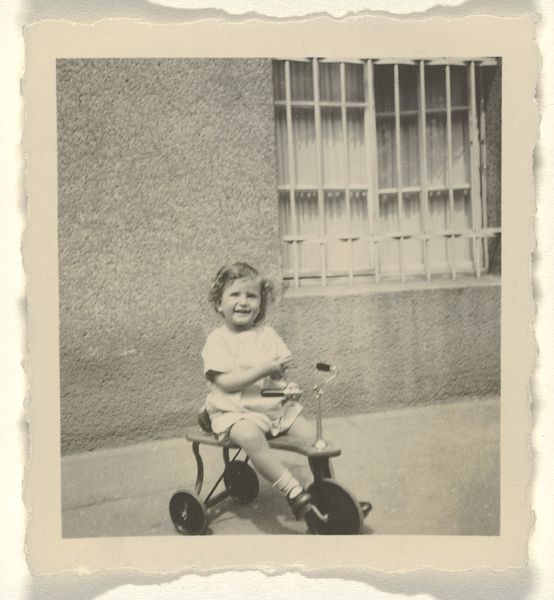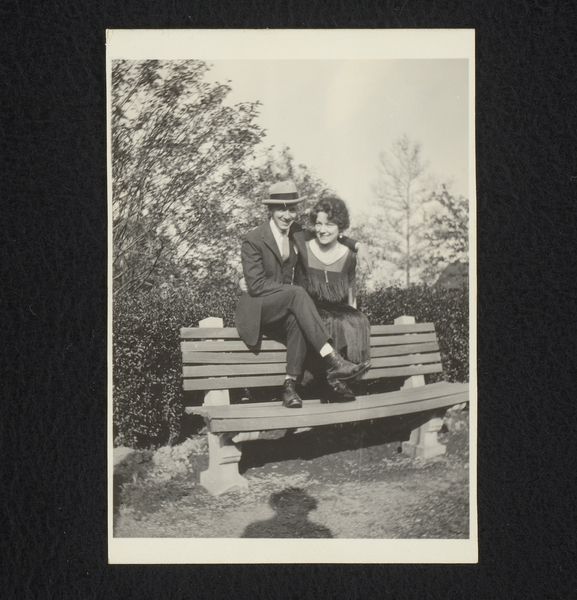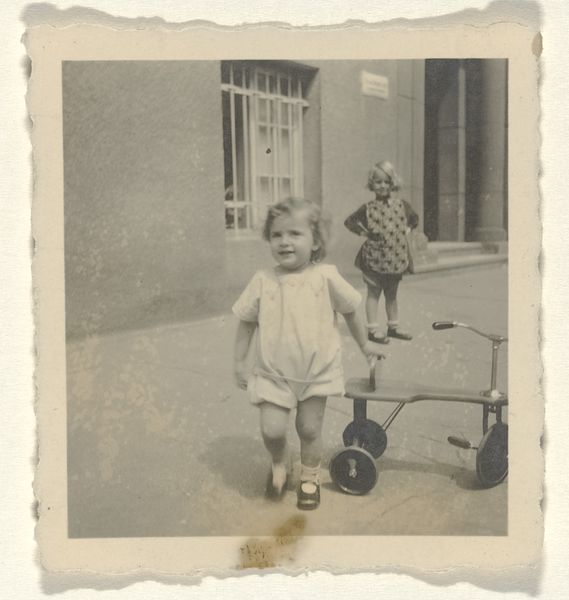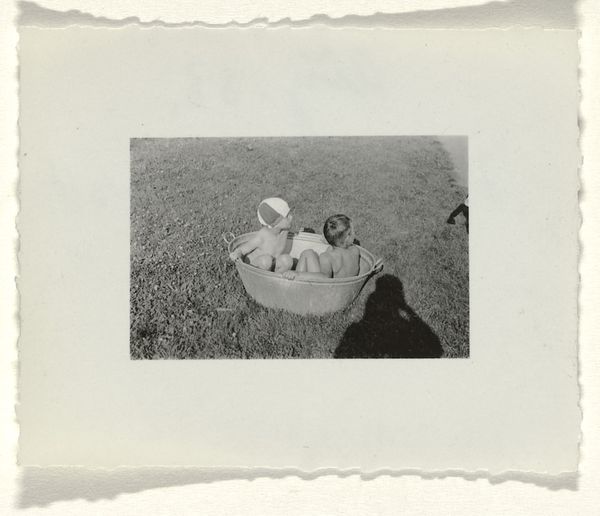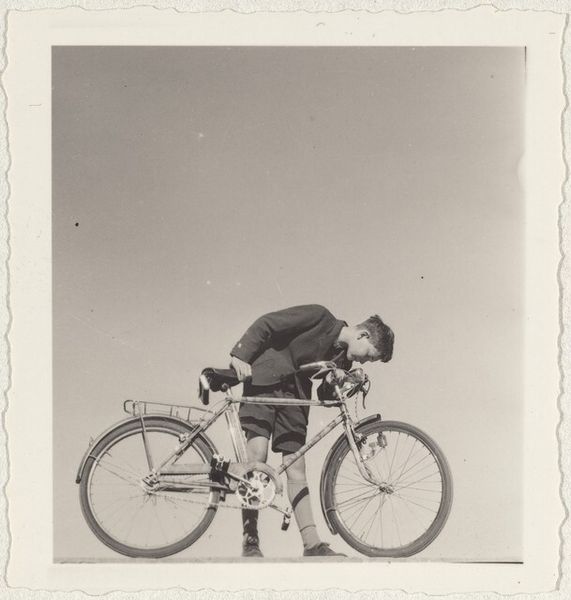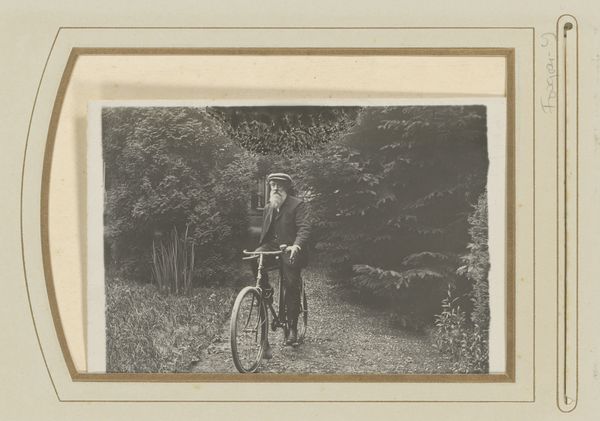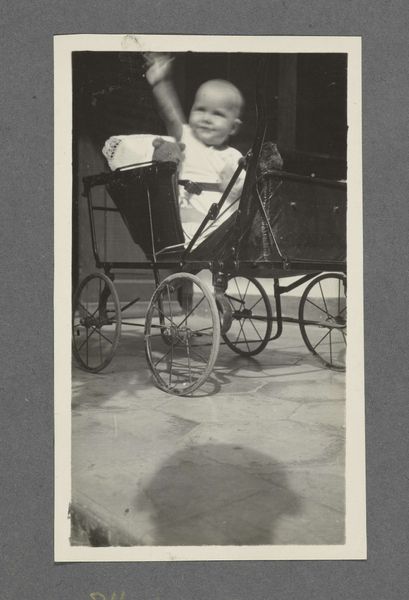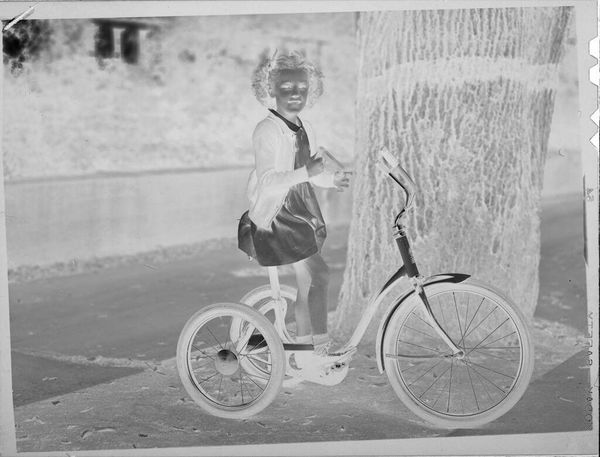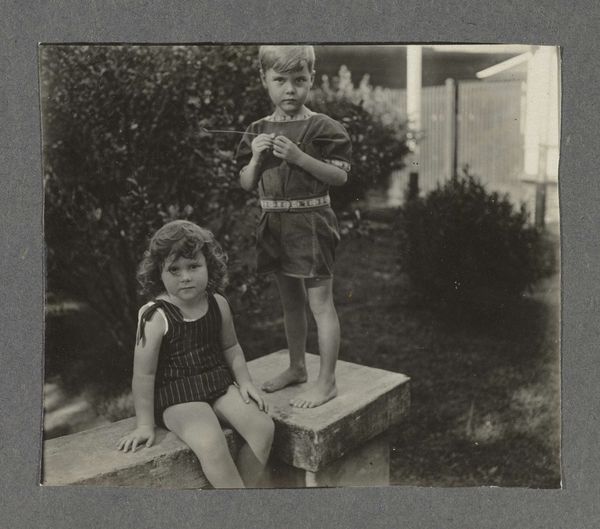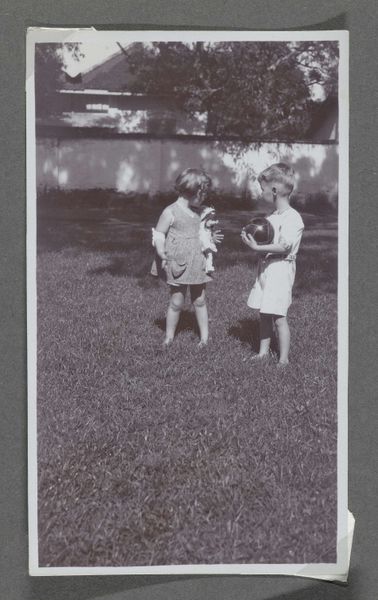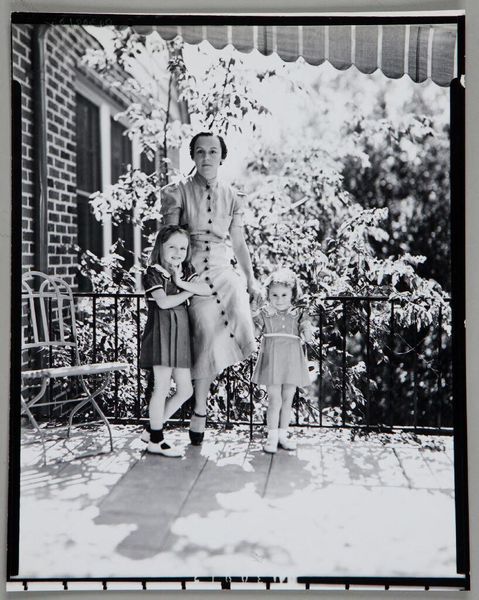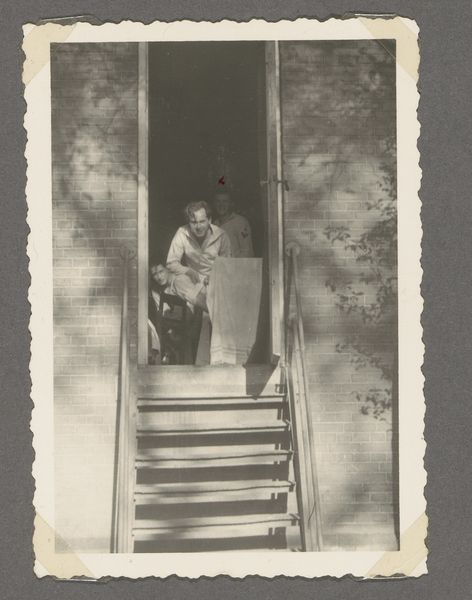
print, photography, gelatin-silver-print
#
portrait
# print
#
street-photography
#
photography
#
historical photography
#
gelatin-silver-print
#
modernism
#
realism
Dimensions: image: 5.6 x 5.3 cm (2 3/16 x 2 1/16 in.) sheet: 6.6 x 6.3 cm (2 5/8 x 2 1/2 in.)
Copyright: National Gallery of Art: CC0 1.0
Curator: We’re looking at Robert Frank’s gelatin silver print, "Girl with bicycles, Basel--Children," created in 1945. What strikes you first about this image? Editor: It has a very stark, almost naive quality, hasn’t it? The contrast is quite high, the girl's expression a little hesitant, and those shadows really dominate the composition. It gives a feeling of quiet apprehension. Curator: The setting in Basel, Switzerland, just at the close of World War II is vital to consider. The choice of gelatin silver print offered Frank incredible control, especially important when responding to this specific cultural-historical moment, capturing children affected by the war. Editor: Absolutely. Thinking about photographic paper itself – its availability in post-war Europe must have shaped its production. What paper stock did Frank even have access to at the time? It definitely lends itself to a rough, documentary feel. You can see the paper’s tooth. Curator: This roughness emphasizes realism. By using accessible technologies like the 35mm camera, Frank turned an apparently common snapshot into social commentary, focusing our attention onto everyday life of postwar children. The image participates in that documentary turn toward realism in postwar photography. Editor: It makes you think about who was able to consume these images too. Who was Frank trying to reach with these pictures and how did audiences engage with them. It certainly makes it clear this was meant to be publicly exhibited, perhaps to create awareness. Curator: It's interesting how that humble bicycle takes on an almost symbolic quality as a token of normal childhood in this postwar setting. We should observe the materiality of those metal frames and rubber tires as essential components of everyday life. Editor: Right. Looking closer I feel that in viewing photographs, we're not merely observers, but implicated participants in the scene – our understanding, even judgment, inevitably woven into the very fabric of this street corner, back in 1945 Basel. Curator: Frank offers the possibility of photography as an accessible means of both observing the social landscape and contributing to dialogue around its rebuilding after widespread devastation. Editor: It prompts me to contemplate how visual narratives intertwine to not only reveal specific narratives, but also inform the future.
Comments
No comments
Be the first to comment and join the conversation on the ultimate creative platform.

